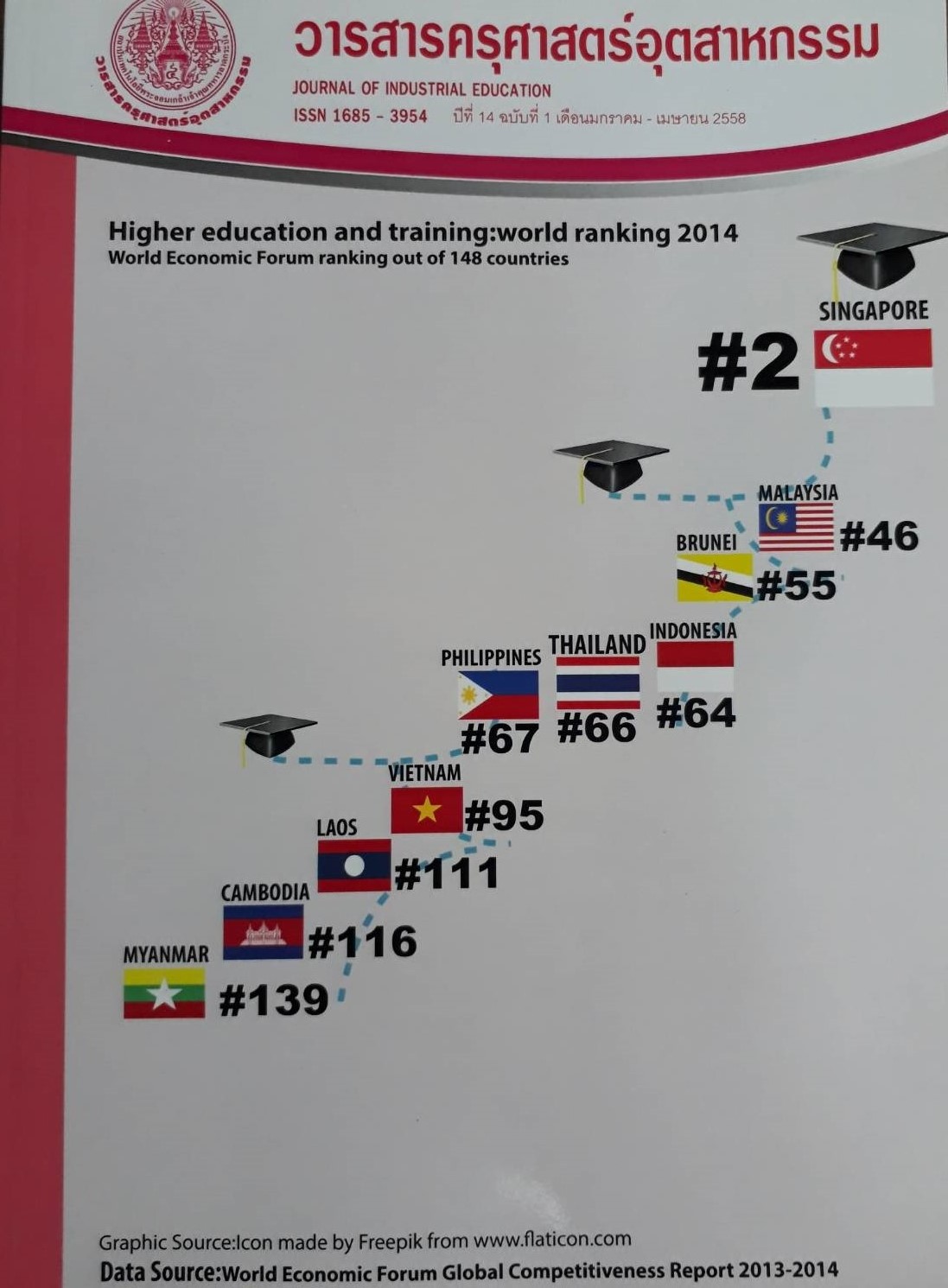A Development of Web-Based Instruction Based on Constructivist Theory on Open Office Applications
Keywords:
Constructivist theory, Efficiency, A development of web-based Instruction, AchievementAbstract
The purposes of this research were 1) to develop and examine the efficiency of a constructivist of web-based instruction on Open Office Applications and 2) to compare the learning achievement on Open Office Applications of the subjects learning through the constructivist web-based instruction and the subjects learning through traditional method. The samples in the research were 40 from 90 students in the first year of the their secondary education, in the academic year 2013 at Tassaban 2 Wipatsuksa School, Surin province, Thailand, selected by simple random sampling method. Instruments of research consisted of Web-Based Instruction, the quality evaluation form of Web-Based Instruction and an achievement test.
\The research instrument was a web-based instruction based on constructivist theory on Open Office Applications. Efficiency of the web-Based instruction was obtained from achievement scores of the sub-tests and post-test, by using the criterion set of 80:80. Then, the scores were statistically compared with those of controlled group by using Independent Sample t-test.
The results of this study showed that 1) the quality of the constructivist web-based instruction on Open Office Application was at good level when considering the lesson contents ( = 4.35) and media production (
= 4.43) 2) the efficiency of the constructivist web-based instruction was in accordance with the required criteria at least 80:80 at E1:E2 = 84.25:81.13 and 3) the learning efficiency of the students learning through the constructivist web – based instruction was better than those of the regularly instructed group, with the significance level of .05
References
[2] ถนอมพร เลาจรัสแสง. 2541. คอมพิวเตอร์ช่วยสอน. กรุงเทพฯ: จุฬาลงกรณ์มหาวิทยาลัย.
[3] กระทรวงศึกษาธิการ.กรมวิชาการ. 2543. การปฏิรูปการเรียนรู้ที่เน้นผู้เรียนสำคัญที่สุด: แนวทางสู่การปฏิบัติ. กรุงเทพฯ: โรงพิมพ์คุรุสภาลาดพร้าว.
[4] บุญชม ศรีสะอาด. 2545. วิธีการสร้างสถิติสำหรับการวิจัย. พิมพ์ครั้งที่ 6. กรุงเทพฯ: สุวีริยาสาส์น.
[5] ชัยยงค์ พรหมวงศ์. และคณะ. 2542. ระบบสื่อสารสอน. กรุงเทพฯ : จุฬาลงกรณ์มหาวิทยาลัย
[6] ขนิษฐา สิทธิเทียมจันทร์. การพัฒนาบทเรียนผ่านเครือข่ายอินเทอร์เน็ตเพื่อการทบทวน เรื่อง เคเบิ้ลโมเด็มเบื้องต้น.วารสารครุศาสตร์อุตสาหกรรม, 11(3), น.33-39.
[7] ศิริลักษณ์ เพ็ชรมงคล. 2551. บทเรียนบนเทอร์เน็ตเรื่องการจัดองค์ประกอบศิลป์ วิทยานิพนธ์ปริญญาครุศาสตร์อุตสาหกรรม สาขาเทคโนโลยีการศึกษาทางการอาชีวะและเทคนิคศึกษา บัณฑิตวิทยาลัยสถาบันเทคโนโลยีพระจอมเกล้าเจ้าคุณทหารลาดกระบัง.
[8] นูรีซาน ดอเลาะ. 2551. บทเรียนบนเครือข่ายตามแนวทฤษฎีคอนสรัคติวิสต์ เรื่องธาตุและสารประกอบในอุตสาหกรรมสำหรับนักเรียนโรงเรียนเอกชนสอนศาสนาอิสลาม. วิทยานิพนธ์ศึกษาศาสตรมหาบัณฑิต (เทคโนโลยีและสื่อสารการศึกษา). มหาวิทยาลัยสงขลานครินทร์ วิทยาเขตปัตตานี.
[9] พินิจ ฐิติพันธ์รังสฤต .2551. บทเรียนผ่านเครือข่ายอินเทอร์เน็ตเรื่องการเรียนรู้ทางทัศนะ. วิทยานิพนธ์ครุศาสตร์อุตสาหกรรมมหาบัณฑิต สาขาวิชาเทคโนโลยีการศึกษาทางการอาชีวะและเทคนิคศึกษา บัณฑิตวิทยาลัย สถาบันเทคโนโลยีพระจอมเกล้าเจ้าคุณทหารลาดกระบัง.
Downloads
Published
How to Cite
Issue
Section
License
"The opinions and contents including the words in papers are responsibility by the authors."
"ข้อคิดเห็น เนื้อหา รวมทั้งการใช้ภาษาในบทความถือเป็นความรับผิดชอบของผู้เขียน"



